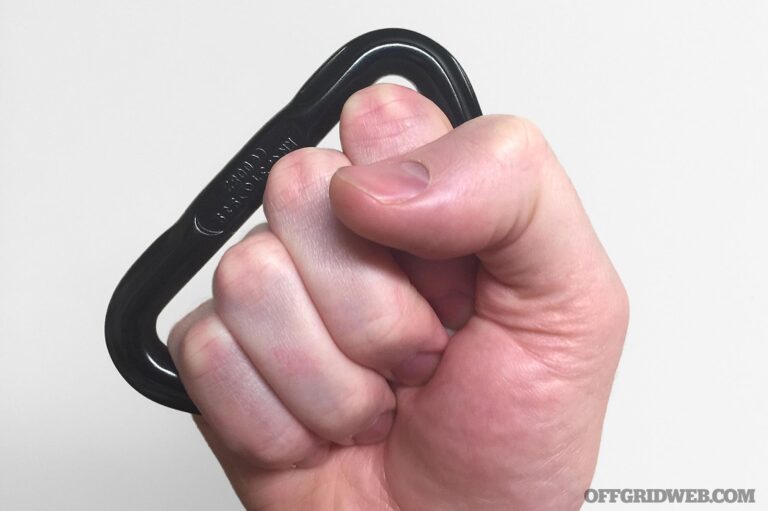Table of Contents
- Choosing Common Household Items as Effective Self-Defense Tools
- Understanding Legal and Safety Considerations When Using Everyday Objects
- Techniques for Maximal Impact with Simple Items in Emergency Situations
- Practical Tips for Carrying and Utilizing Self-Defense Items Discreetly
- Key Takeaways
Choosing Common Household Items as Effective Self-Defense Tools
When considering tools for self-defense, many overlook the potential of everyday household items. These objects are often readily available, easy to carry, and can be surprisingly effective when used correctly. Items like kitchen utensils, keys, and even heavy books can serve as improvised weapons that create distance or momentarily incapacitate an attacker. The advantage is twofold: familiarity with these items enhances your reaction time, and their unassuming nature can catch an assailant off guard. In stressful situations, the ability to act swiftly with what’s at hand is invaluable.
Integrating common household objects into your self-defense strategy requires understanding their utility and how to wield them safely. For example, a rolling pin offers leverage and power, while a pen-more than just a writing instrument-can function as a precise striking tool. Consider these items for their weight, grip, and potential impact zones. Here are a few practical options to keep in mind:
- Umbrella: Provides reach and durability, excellent for blocking and striking.
- Flashlight: Useful both for illuminating dark areas and delivering solid blows.
- Scarf or Belt: Can be used to entangle or distract an attacker.
- Heavy Books: Perfect for leveraging force, especially within confined spaces.
Understanding Legal and Safety Considerations When Using Everyday Objects
When considering self-defense, it’s crucial to understand the legal implications associated with using everyday objects. Laws vary significantly by region and often dictate what constitutes lawful defense versus excessive force. For example, wielding a common key or pen for protection could be permissible, but using objects in a manner that could be perceived as a weapon could cross legal boundaries. Always familiarize yourself with local statutes and ensure your response aligns with the principle of reasonable force to avoid potential legal consequences.
Safety is equally paramount. Using ordinary items for defense requires quick thinking and knowledge of their effective application without causing unintended injury to yourself or bystanders. Before engaging in any physical defense, consider these safety tips:
- Practice handling: Familiarize yourself with the object’s weight, grip, and impact to improve control during stressful situations.
- Avoid targeting vulnerable areas: Aim for non-lethal parts of an attacker to minimize harm while maximizing your chance to escape.
- Stay aware of surroundings: Ensure your defensive actions do not escalate the threat or introduce additional hazards.
Techniques for Maximal Impact with Simple Items in Emergency Situations
In moments of crisis, your surroundings can become an unexpected ally. Everyday objects, when wielded with intention and knowledge, transform into powerful tools for self-defense. Consider a simple pen-not just a writing instrument but a compact baton capable of delivering precise jabs to vulnerable targets such as the throat or eyes. Keys, often overlooked, can be clustered between fingers to increase the impact force of a punch or used to scratch and create distraction. Mastering these techniques involves understanding pressure points and angles, turning mundane items into extensions of your defensive reflexes.
To maximize effectiveness, always aim for critical zones where even a light strike can cause discomfort or delay an aggressor, giving you vital moments to escape. Here’s how you can utilize common items:
- Umbrellas: Use the pointed tip for thrusting motions or create distance with swinging actions.
- Belt: Loop it around as a whip or use the buckle as a striking surface.
- Scarf or Tie: Wrap around an attacker’s wrist or neck for temporary immobilization.
- Mobile Phone: Strike with edges aimed at soft tissue areas.
Practical Tips for Carrying and Utilizing Self-Defense Items Discreetly
Keeping self-defense tools on your person without drawing attention requires a blend of smart selection and subtlety. Opt for items that blend seamlessly into your daily carry, such as a sturdy pen, a keychain with a sharp edge, or even a small flashlight. These objects serve dual purposes, making them innocuous in any setting. Consider integrating them into everyday pockets or bags with designated compartments to avoid fumbling, which can compromise your preparedness. Always maintain accessibility without sacrificing discretion-practice smooth retrieval motions to keep calm and confident when you need to defend yourself.
Practical tactics also include regular maintenance and familiarity with your chosen items. Test the weight and grip in different positions-purse, jacket, or belt-to ensure comfort and readiness under pressure. Avoid ostentatious or bulky gear that invites questions or concern. Incorporate your self-defense tools into routines: keep a tactical umbrella within arm’s reach on rainy days or use a hairbrush with a hidden handle when commuting. By making self-defense an effortless component of your everyday lifestyle, you empower yourself without advertising your protective measures.
- Choose multi-purpose items to avoid suspicion
- Keep tools accessible but out of sight
- Practice smooth, confident retrieval methods
- Maintain and regularly test your self-defense objects
- Incorporate tools naturally into your daily routine
Key Takeaways
Incorporating everyday objects into your self-defense strategy is a practical and empowering approach to personal safety. By recognizing the potential in items you already carry or encounter daily, you can enhance your preparedness without the need for specialized equipment. Remember, the key to effective self-defense lies not just in the tools you have, but in your awareness, confidence, and ability to think quickly under pressure. Stay alert, stay informed, and always prioritize your safety in every situation.Check Our Other Blogs
- StunGun – Your Trusted Source for Stun Guns, Laws, and Self-Defense Tips
- PepperSprayLaws – Your Trusted Resource for Pepper Spray Information
- StunGunLaws – Your Trusted Guide to Stun Gun Legality and Safety



